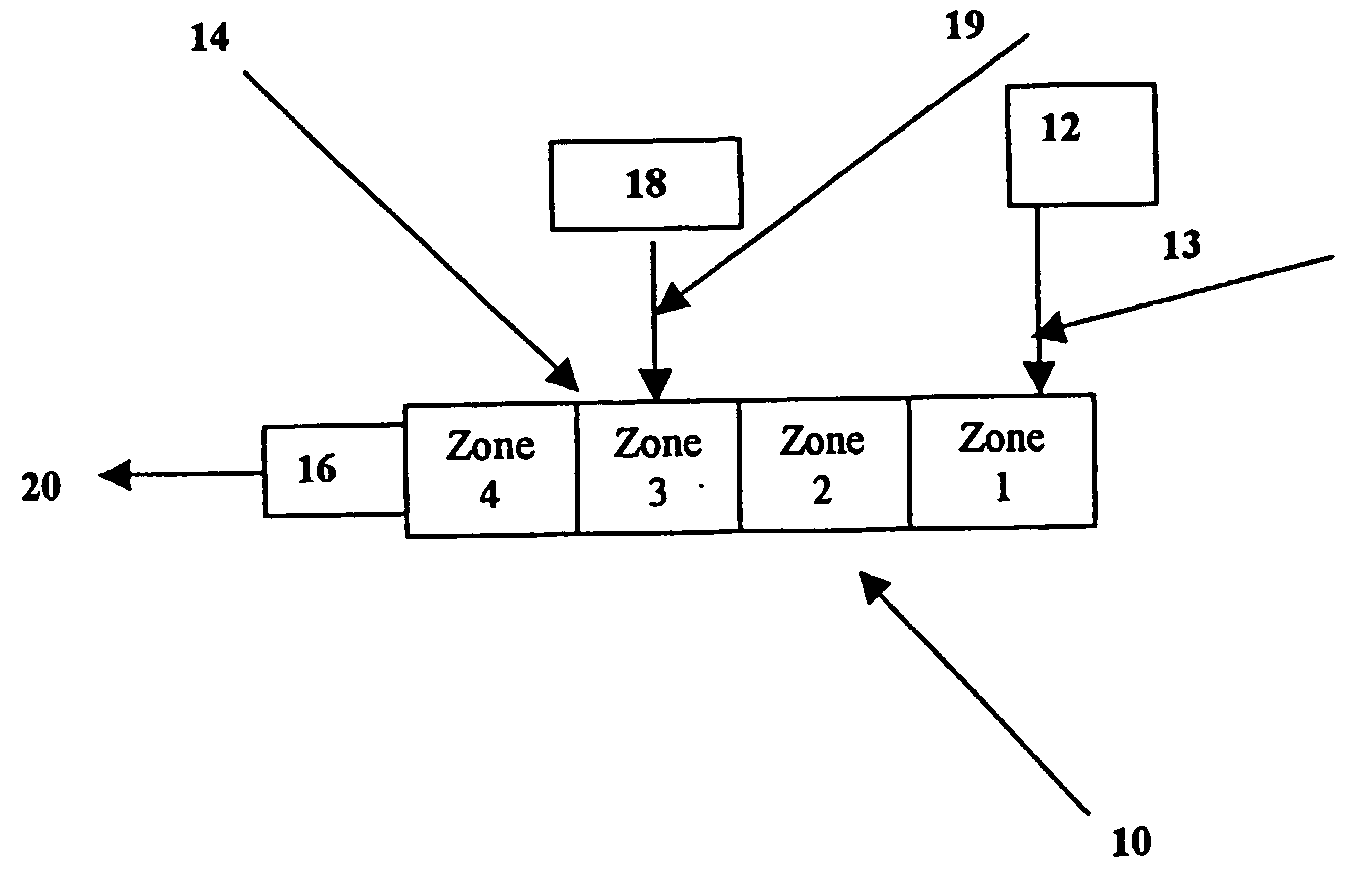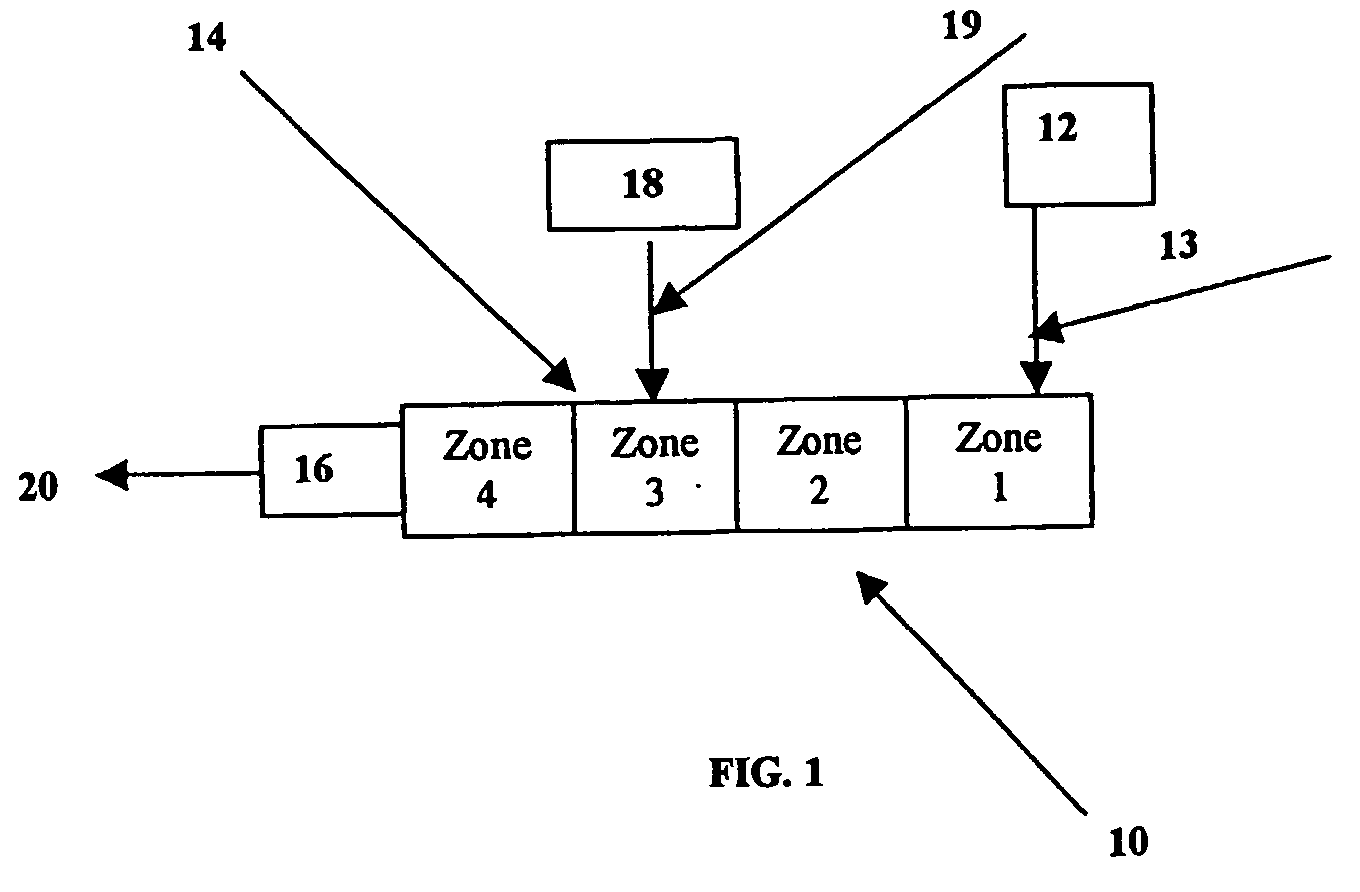Low-density cellular wood plastic composite and process for formation
a wood plastic composite and low-density technology, applied in the field of low-density cellular wood plastic composite and process for formation, can solve the problems of increasing equipment costs, and achieve the effects of reducing material costs, increasing stiffness of products, and low cos
- Summary
- Abstract
- Description
- Claims
- Application Information
AI Technical Summary
Benefits of technology
Problems solved by technology
Method used
Image
Examples
embodiment 1
Sample Embodiment 1
[0049] To investigate the properties of foam core composites that could be produced, laminates were made with outer flanges of high density wood-plastic composite material with a foam block melt bonded between them. Both the foam block and high-density flanges were heated on a platen of a hot press set at 170.degree. C. for two minutes. The two heated surfaces were then pressed together for two minutes. Specimens were allowed to cool to room temperature overnight and were tested in flexure. Two types of specimens were made and tested. One type was made from foam containing 20% wood and the other from foam containing 30% wood. The flanges for both types were made from a formulation containing 58% wood, 31% HDPE, 8% talc, 2% zinc stearate, and 1% EBS wax.
[0050] The specimens made from 20% wood foam were broken in flexure on a mechanical type universal testing machine (United Model SFM-10, Huntington Beach, Calif.). An automated testing procedure was used which uses ...
PUM
| Property | Measurement | Unit |
|---|---|---|
| pressure | aaaaa | aaaaa |
| pressure | aaaaa | aaaaa |
| temperature | aaaaa | aaaaa |
Abstract
Description
Claims
Application Information
 Login to View More
Login to View More - R&D
- Intellectual Property
- Life Sciences
- Materials
- Tech Scout
- Unparalleled Data Quality
- Higher Quality Content
- 60% Fewer Hallucinations
Browse by: Latest US Patents, China's latest patents, Technical Efficacy Thesaurus, Application Domain, Technology Topic, Popular Technical Reports.
© 2025 PatSnap. All rights reserved.Legal|Privacy policy|Modern Slavery Act Transparency Statement|Sitemap|About US| Contact US: help@patsnap.com


